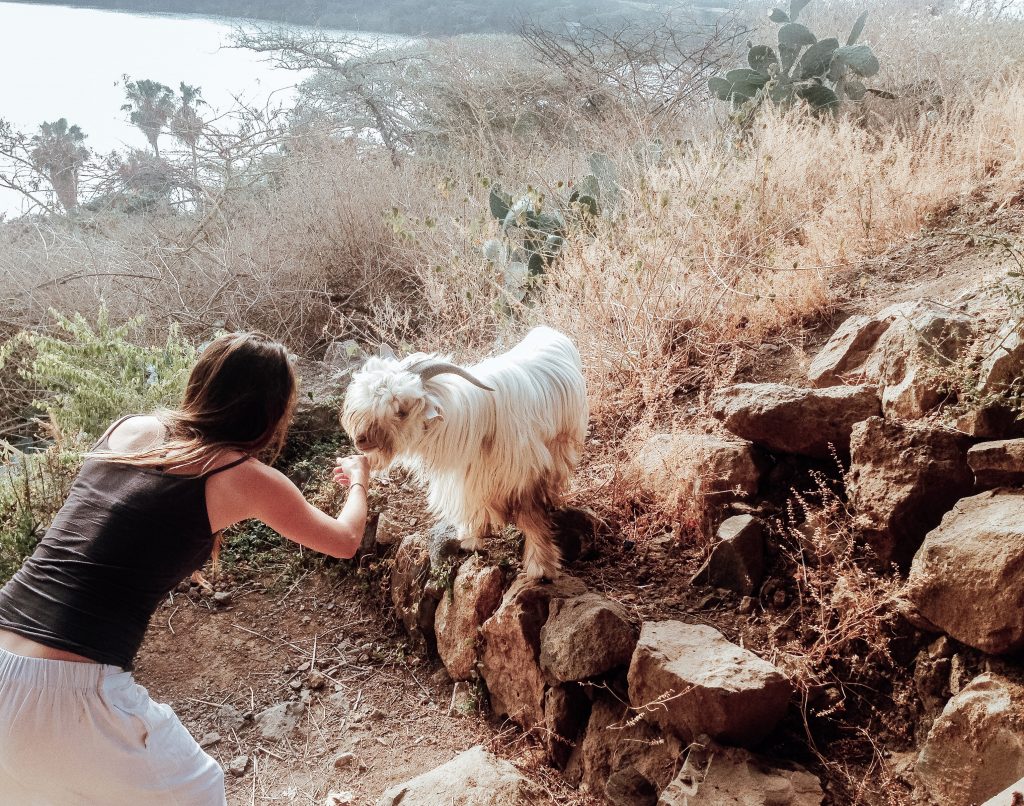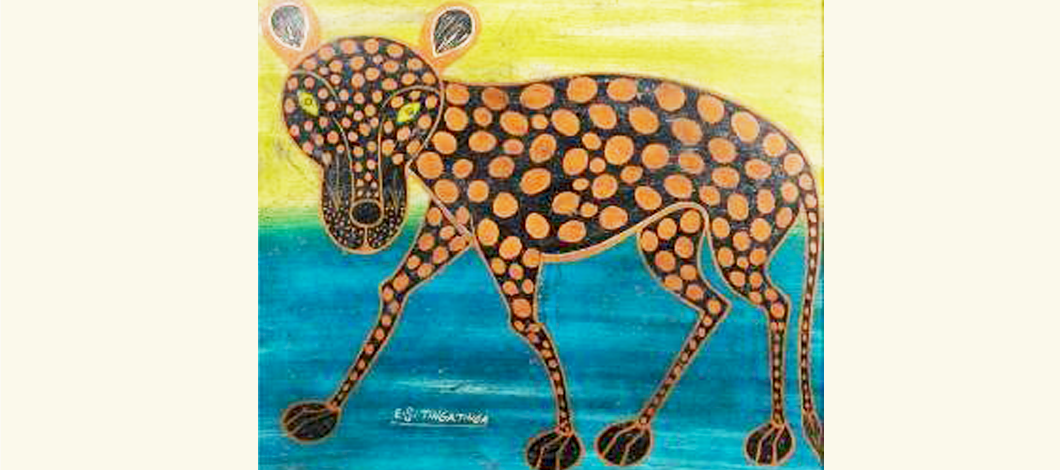
Bishoftu: Going slow in Ethiopia’s Sunday town
Lake Bishoftu warms with the sun, just rising. Its surface thickens – coppery – and over it, water birds paddle silty circles; stirring thin black trails like tendrils of incense in a traditional coffee ceremony. They’re feeding on insects we can’t see from our balcony over the cliff. But the activity from up here becomes an artwork.
We’re waking in Bishoftu (previously Debre Zeyit), 40kms from Ethiopia’s capital Addis Ababa, above one of the country’s deepest crater lakes. It’s one of a chain of five – 7000-year-old volcanoes actually – that loop through this town to give it its name: ‘Place of Water’ in the Oromo language.
For the Oromo, Ethiopia’s largest ethnic group, it’s a deeply sacred place. Each year, millions gather along the banks of nearby Hora (lake) Arsadi for the colourful Ireecha Festival: A thanksgiving, celebrating the end of the rains and a new year of good harvests. Water is life-giver and peace-maker.
It is also what has made Bishoftu Addis Ababa’s Sunday town: A weekend favourite of new lovers, young families, weary professionals – anyone really – seeking respite from that ever-expanding jostle of a capital. It’s greener and warmer here; peppered with waterfront resorts that serve tropical fruit juices, big-sky vistas, abundant bird life and sun when Addis is heavy with cloud. The Emperor Haile Selassie had a great palace with pet lions here to retreat to at week’s end. But today, it’s the kind of place even ordinary folk like us can come to re-gather.
For just this, we’d chosen Asham Africa: An eco-minded boutique hotel built into the steep basalt wall of the lake’s western side. We’d trundled into town in my husband’s old Toyota pick-up the morning before, warm wind in our faces because the windows no longer wind. He calls it his mule and himself an ‘urbanised peasant’. “The most uncomplicated man in Addis Ababa, darling.” Which translates, probably, to the truth that he’s happiest out of town in easier, open spaces.
At the Bishoftu toll gate, we pass a small mud house hand-painted with a giant green heart. It’s framed with eucalypts in a compound with dark, tilled soil and sunflowers, a donkey, some oxen. A cheering marker to a place more vital, more earthy, a bit romantic maybe.
We head first for the popular lake Bishoftu Guda. Past a colourful stretch of ruby watermelon stalls and potted flowers, around tired horses using the slipstream between truck lanes to swhoosh away their midges. Past merchants straddling loads at the river sand market; around jerky tuk tuks and a taxi rank of horse-drawn garies. We pass the old Airforce Club, now a public pool, and remember to turn right at the fork where local boys switch signposts to confound travelers like us into paying for guides.
We arrive at Babogaya Resort for a lazy lunch by the water, emerald at midday. Here, sparrows bounce about and cats lie at our feet, fat on fish scraps, as waiters run plates up and down the cliff. We sit under umbrellas of bleached grass and acacia, water lapping against the wall, kingfishers swinging in bendy reeds to the rhythms of Harry Belafonte from a restaurant above. Under false banana palms and jacaranda, it’s all decidedly calypso tropical– already a world away.

A postprandial rowboat tour of the lake reveals a handful of resorts and landscaped waterfront villas owned by African presidents and princes and the protestant church. Our captain points to colourful birds in fig and flame trees, their names like gems: African Paradise Flycatchers, Cinnamon-chested bee-eaters, Fire Finches, Willow Warblers. And, in the way that quiet water makes everything feel good again, we begin to unwind.
High on the opposite side of the lake, is Salayish Lodge – a friendly spot for a tej (honey mead) or a spiced ‘cumim’ chai in the afternoon sun. The lodge has rustic bamboo huts and a honeymoon cabin for cliff-top stays – but we head through its garden of avocado and mangoes to a quiet bamboo pagoda on the crater rim. Salayish makes its tej on site and has a reputation for distilling fine arake too, a grappa like spirit often brewed with local herbs as a tonic. Tej is said to have a kick like an Ethiopian mule but the arake is probably harder-hitting. In any case, here is the place to sample them like locals, with a low-slung sun, one of the best views in town – and only Afro the indomitable resident mohair goat as company.

It’s back on the balconies of Asham Africa though– consistently rated the honeymoon hotel in town – that we really kick back. Asham means ‘welcome’ in different corners of the country and true to form, we’re greeted on arrival with glasses of Rift Valley shiraz to watch the sun fall over the lake from above.
As it dips into dark, the crater seems to let out a great sigh and I remember reading how scientists have begun measuring movement in these parts from space. Ethiopia is one of the most volcanically active countries on earth and in the Lakes Region, just south of here, they’re watching a mountain called Aluto inflate and deflate. The push and pull of magma deep below looks like the earth slowly breathing, they say.
Local lore has it that actually, this particular lake is home to a sleeping devil who throws up black water and dead things from its belly in a fit of rage at least once a year. For tonight though, it’s a picture of calm. The only sounds the occasional yelp of hyena beyond its forest walls.
We’d chosen Asham largely for this reason; the quiet. But also for its emphasis on sustainability and good local food.
Much of what’s on the menu here is grown in the hotel gardens. Kitchen herbs climb with lavender and honeysuckle up the rock face from the lake below; spinach and corn spill over the sides of old bathtubs outside rooms made from recycled water bottles. The hotel uses solar and turns waste into biogas, with the goal of becoming wholly renewable.
It’s also extremely comfortable. The owners have fashioned generous rooms with textiles and artwork from a lifetime of travels through Africa. In ours, we’re transported to the Côte d’Ivoire with West African prints and mudcloth bedspreads. A lofty four-poster bed, floor-to-ceiling windows and a private balcony above the lake – moon smiling– are all perfectly romantic. More wine and ideas of sashaying about in fine Ethiopian cotton kaftans – very fitting.
Of course, waking here – watching the ducks and their drifting lacework in the early still – is luxurious too: A meditation and a reminder that there’s good work to be made in going slow.
Further along the ridge, a green-roofed church sends morning prayer across the water. The forest at its edges – tangled and light-tipped – hums to life around us. And this, I think – hot coffee in hand – is the way to start a good day in Ethiopia!









